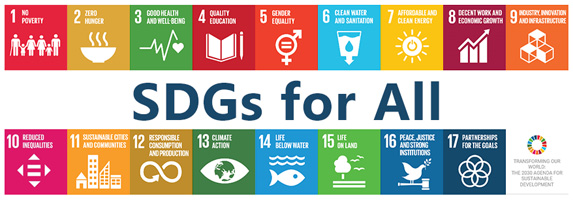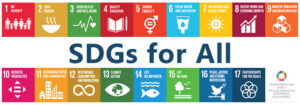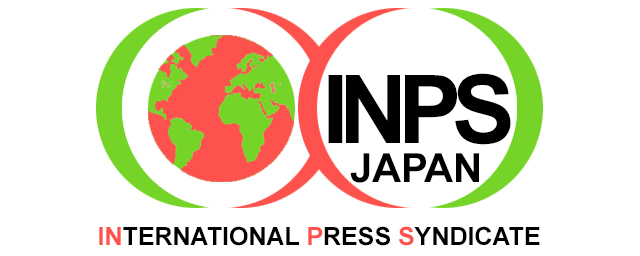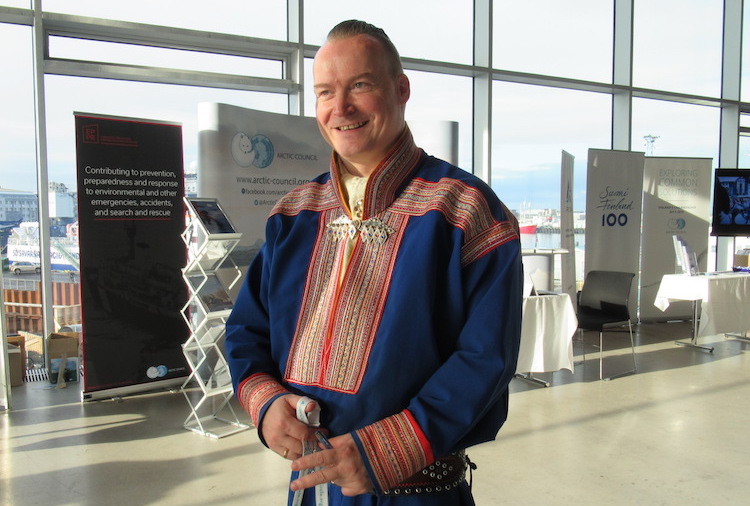By Lowana Veal
REYKJAVIK (IDN) – “Islanders have nothing to do with climate change though they may suffer the most,” Nainoa Thompson from the Polynesian Voyaging Society told an Arctic Circle seminar focusing on global perspectives on traditional knowledge, science and climate change. Thompson comes from Hawaii, but his co-speakers came from Thailand, Chad, Fiji, Kenya and Norwegian Lapland.
The plight of South Pacific islanders was one of the main themes of this year’s Arctic Circle Assembly, organised in Reykjavik for the fifth consecutive year. This year’s event (held from October 13 to 15) was particularly broad in scope, with a choice of 105 breakout sessions (seminars) as well as speeches and panel discussions. INDONESIAN | JAPANESE | KOREAN | PORTUGUESE | TAGALOG
In recent years, marine pollution and the impact of microplastics on oceans have become very topical. In an attempt to tackle this problem, Dutch physical oceanographer Erik van Sebille has devised an interactive map to track the fate of plastics.
Reporting that more than 70 percent of all floating plastic emanating from northwest Europe ends up in the Arctic, he and his colleagues organised an expedition to Svalbard and Jan Mayen earlier this year where they found a piece of damaged fishing net that had originally entered the sea off Nova Scotia in the year 2000, along with a small plastic ship that was traced to a 1958 cereal packet in the United Kingdom.
Tom Barry from the Conservation of Arctic Flora and Fauna programme introduced the State of Arctic Marine Biodiversity report for monitoring, which came out in May 2017 and includes key findings and advice for monitoring. “The key tool is the framework the marine plan has put in place to facilitate repeatable reporting and communicating on the status and trends of Arctic marine biodiversity,” he said.
Barry noted that disappearing sea ice has an effect on plant and animal life because when sea ice disappears it poses a challenge for various communities.
Like last year, Inuit communities were a major focus at the three-day gathering, but this time the emphasis was more on traditional knowledge (TK) than renewable energy.
Memorial University in Canada has developed a programme called Smart Ice, which coordinates science with local traditional issues. The initiative involves listening to and working with communities, bringing people together, identifying priorities, and integrating TK with university knowledge. Canadian northern communities, which consist largely of Inuit peoples, rely to a great extent on sea ice for hunting, wood collection and other necessities.
In Norway, reported Anders Oskal from Norway’s International Centre for Reindeer Husbandry, the Arctic Council’s Arctic Monitoring and Assessment Programme works with reindeer herders and how they deal with climate change.
“The Arctic Council has been pioneering in including TK,” he said, but “the research side is more accepting of TK than is the management side, who say ‘we need objective knowledge to manage’… There is a need for more indigenous institutions, transboundary institutions, that blend the two types of knowledge, as some reindeer herders have PhDs.”
TK is included in the Paris Agreement on climate change and a traditional peoples’ platform has been set up to exchange knowledge, the Assembly heard. “A traditional peoples’ and communities’ pavilion will be set up in Bonn at COP 23 (the 2017 UN Climate Change Conference) which will involve seven regions,” said Hindou Ibrahim, co-chair of the International Indigenous Peoples Forum on Climate Change.
Action by individuals played an important role this year. Marco Braun from Canadian consultancy Ouranos pointed out in a plenary on climate change and energy that there is a time-lag of about 30 years after “switching off’ – meaning that we need to act now if we are to curb climate change.
Developed at a few weeks’ notice at the 2016 UN Climate Change Conference (COP 22) in Marrakech last year at the instigation of former Icelandic president Olafur Ragnar Grimsson, who also spearheaded the notion of an Arctic Circle assembly, The Roadmap mission was introduced in a plenary session at the assembly.
This consists of 20 constructive statements with a focus on ‘Doers‘, as exemplified by the first statement of the Roadmap: “We believe the time is now. The time to take action. The time to do what has to be done to bring about the changes outlined in the Paris accords. The time to stop talking about ‘What‘ and start figuring out ‘How‘.”
The Assembly was also the venue for the first discussion about sustainable development goals (SDGs) in the Arctic. These will take place once a month and will eventually report back to the Arctic Council meeting in September 2018. Various issues were brought up, from the need for hunting communities in Greenland to have an input to the need to “get beyond the rhetoric” in relation to issues such as sustainable mining.
Maria Mjoll Jonsdottir, United Nations Director at Iceland’s Ministry for Foreign Affairs, told the audience. “Everything goes back to the main challenge, which is climate change. Iceland is looking at greener land; fish are moving to warmer waters. There is an integrated nature to these issues.” However, “Goal (SDG) 5, gender equality and the empowerment of women, is a key driver for reaching the other goals,” she concluded.
Education is another key issue, according to Heather Nicol from Trent University in Canada, who said that SDG goals should be made more applicable to small northern communities. “How do you support educational opportunities in small communities in the north that do not have much access to education,” she asked. “And in relation to SDGs 16 and 17, she continued, “how does technology affect education and social infrastructure?”
The education issue also cropped up in other seminars. In a session on Arctic youth and sustainable futures, Diane Hirshberg from the University of Alaska Anchorage pointed out that access to education can be limited in small Alaskan communities. “If you decide to move from your home community, you may end up having more students in your class than in your entire home community,” she said. “Sometimes,” she continued, “you may have to learn a second language” if the new school does not teach in the person’s native language. This produces stress and upheaval. Similar concerns also occur in Greenland.
The University of the Arctic (UArctic) is made up of a group of universities, research institutes and various organisations dealing with education and research in northern climes. Its Thematic Network on Geopolitics and Security has been holding seminars every year at the Arctic Circle Assembly. One seminar this year looked at the environmental damage caused by the military in peacetime and another looked at climate change as the new security threat.
Lassi Heinenen from the University of Lapland was one of the organisers of the sessions. He explained that at least 141 million tonnes of CO2 equivalents were released during the Iraq war between March 2003 and 2007. “The military is some sort of protected polluter,” he says. “Think of all the resources used during the military exercise with Russia and Belarus a few weeks ago,” he pointed out, referring to the ZAPAD 2017 exercise.
During the Cold War, parts of Russia became a dumping ground for old ammunition, petroleum products and other military debris. Anatoly Shevchuk, professor at the Russian Presidential Academy of National Economy and Public Administration, described Russia’s clean-up of the dumping ground of Franz Josef archipelago which has been ongoing since 2012, and says they are about to start work on cleaning up Kola Bay.
A second seminar looked at climate change as the new threat. In this, Wilfrid Greaves from Canada’s University of Victoria looked at climate change versus urbanisation, pointing out that cities with large infrastructures are more vulnerable to climate change while the impact of climate change on cities is underestimated. “Warming in urban areas is 10 times that of non-urban areas,” he noted. [IDN-InDepthNews – 25 October 2017]
Photo: Anders Oskal from Norway’s International Centre for Reindeer Husbandry said the Arctic Council’s Arctic Monitoring and Assessment Programme works with reindeer herders and how they deal with climate change.




